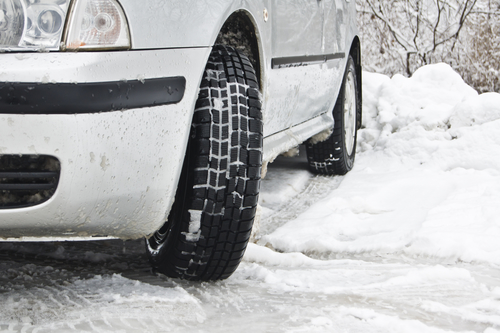While the “Valley of the Sun” doesn’t have the most formidable cold weather, it’s still important to plan ahead for the inevitable problems that come with even mild winters. Read on for information about our winterize car service and DIY tips.
Why You Should Winterize Your Car
Keeping your vehicle running safely should be a top priority. Cold temperatures, dirt, and road salt deposits can cause a lot of damage. It’s always best to take your car in for its recommended car maintenance to make sure it’s in good enough shape to tackle winter driving. Here are a few things you should do to ensure that your car is in tip-top condition and winterized.
Check the Battery
When temperatures drop, battery power decreases, which means it’s going to take a lot more power to start your car during cold, winter months. This also means that if your battery is already in bad shape, the risk of a breakdown increases. A battery that’s at or above 600 CCA is best for optimal winter performance.
Brakes
Even though cold weather won’t necessarily damage your brakes, it’s still a good idea to have them inspected. Having a professional inspect your brakes will help ensure that your car performs well during cold weather conditions. While they’re at it, have the auto repair technician inspect the spark plugs, wires, cables, hoses, and belts. These things can go wrong at any time.
Choose the Right Engine Oil
When it’s cold out, engine oil thickens, which makes it harder for the engine to turn over. Modern vehicles use multi-weight oil, which is suited for a broad range of temperatures. Some manufacturers recommend particular grades of oil for different temperature ranges. If you’re not sure which oil to use during the winter months, check your owner’s manual or call a trusted auto parts store or repair shop and ask.
Have the Cooling System checked out
Cold weather can cause rubber parts in the car to become brittle and eventually fail. With a cold engine, inspect the heater and radiator hoses for cracking, leaking and contamination caused by grease or oil. If the hoses feel overly soft or brittle, replace them.
Cooling systems need to be flushed at least every couple of years (refer to your owner’s manual). Frigid temperatures, road salt residue, and dirt can all cause problems, but keeping corrosion from accumulating in the system by having the cooling system flushed will help you avoid them. Once flushed, the cooling system needs to be refilled with a combination of antifreeze and water, usually in a 50/50 ratio. Coolant is available at auto parts shops in full strength and pre-mixed solutions. In extremely cold conditions coolant ratios of 60/40 or 70/30 would be best.
Tips to DIY
Doing it yourself? Here is winterize car service that you can do yourself:
Maintain the Right Tire Pressure
Every 10-degree change in temperature can cause a loss or gain of 1 PSI, which means you should check tire pressure more often during winter, refilling the tires when necessary. You can find the proper tire pressure on the tire placard that is located on the driver’s side door jamb. You can also refer to your vehicle owner’s manual.
Switch to Winter Tires
If you are in an area that requires different tires, you should consider switching to all-season tires, which will suit the Phoenix areas winter temperatures. If you typically drive in mountainous areas that get snow, like Flagstaff, you may want to invest in winter tires for maximum performance.
Keep Gas in the Tank
Keeping gas in the tank is more important during the winter months. Why? For starters, a full tank minimizes condensation, which helps prevent the gas line from freezing up. Aside from that, if you ever end up stranded, your engine could be the only thing that can keep you warm until help finally arrives.
Put Together a Winter Safety Kit
Before you hit the road, make sure to take along a winter safety kit in case of an emergency. Common items you should have in your safety kit include, a flashlight and extra batteries, jumper cables, jack and lug wrench, rain gear, small fire extinguisher, bottled water, a fully stocked first aid kit, reflective warning triangles, road flairs, and a multi-task tool like a Swiss army knife. Bringing along extra blankets can’t hurt either.
Protect Your Car Inside and Out
Protect your car from the peril of winter driving, including damage to your car’s paint finish, by applying a fresh coat of wax and washing it regularly. It’s also a good idea to wash the car’s underbody and wheel wells regularly to keep road salt from building up. If your vehicle has alloy wheels, applying a coat of wax can help prevent unsightly pitting and corrosion.
If you need winterize car service, contact us today.






